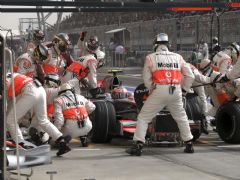'The New Science of Building Great Teams' was an article authored by Alex Pentland and published in the Harvard Business Review in September 2012, using innovative technology to identify some of the critical behaviours that members of productive teams display in their daily behaviour.
Fitting all members of an organisation with 'smart' badges, the research team from MIT were able to collect sociometric data that produced energy and engagement maps. Using this observable, quantifiable and measurable data, the team were able to conclude that teams demonstrating energy, creativity and shared commitment, surpassed productivity markers achieved by other teams who didn't demonstrate the same qualities.
One of the data collection sampling exercises took place in a call centre environment, where productivity was measured objectively in average handling times and staff mood was assessed using employee satisfaction. The badges were able to collect communication data such as tone of voice, body language, who individuals talked to, how much they talked to them and more. Following analysis of the raw data, the team were able to make recommendations to the management of the company to promote improvements in interaction between employees. The organisation revised their coffee break schedule, so that all members break at the same time and the tables in the restaurant were extended to encourage longer interactions. Subsequently, the time that colleagues would socialise together increased, which resulted in a decrease in average call handling times by more than 20% in some of the lowest performing teams and employee satisfaction rose by more than 10%. As a result of the changes in the one office, the company decided to roll out the revisions to all their offices, with a forecast of a productivity increase of $15 million each year.
The cumulative findings of this and other similar studies, found that:
- the best predictors of productivity were a team's energy and engagement outside of formal meetings, to the extent that these two factors alone could explain a third of variation in its productivity.
- 35% of the variation in a team's performance can be accounted for by the number of face to face exchanges among team members.
- social time accounts for more than 50% of the positive changes in communication patterns.
The authors were able to identify that in the most productive teams:
- everyone on the team talks and listens in roughly equal measure, with contributions kept "short and sweet".
- members face one another, with conversations and gestures being energetic in nature.
- members connect directly with one another, not just with the team leader.
- members continue back-channel and side conversations within the team.
- members periodically break, go exploring outside the team and bring information back.
Furthermore, the data points demonstrated that individual reasoning and talent contribute far less to the overall success of a team than might be expected.
So accurate was the data collected, that the team were able to identify the key elements of communication that contributed to an optimally functioning team. These are:
- ENERGY - the most valuable form of communication is face to face, with the next best being phone or video-conferencing. The least effective forms were email and text.
- ENGAGEMENT - the distribution of energy throughout the team is vital, with each member being seen to be an active contributor. Fully engaged teams make better (and in investment companies, more profitable) decisions than partially engaged teams.
- EXPLORATION - the communication that team members engage in outside of their teams is important, with high performing teams seeking more external connections and fresh perspectives for innovation and creativity than poorly performing teams.
The key part of any research article, is however, the "so what?". How can the findings of the data collection and analysis inform future practice?
Using this information, the managers of the call centre were able to visualise the impact of the different characteristics of team interaction and see the effects of the revisions that were put in place. By using the data to map interactions, individuals displaying specific traits could be identified and those facilitating healthy productivity could be used as examples for colleagues, whilst those affecting productivity negatively could be identified and action taken to improve their behaviour through training. Once people are aware of what healthy interactive behaviour looks like, and receive feedback on their own behaviours, training strategies can be put in place and the researchers found this to be extremely effective in effecting positive change.
The information gathered was used to show the organisation that the best leaders lead by example and encourage participation from each team member and that the best members of the team were those that connected others both inside and outside of the group, explored out with the team and then spread those ideas.
Aside of the direct impact on the people, changes can be made to working environments to positively affect human behaviour in a positive manner. Action can be taken to reorganise office space, change seating arrangements or extend tables in eating areas.
I am looking forward to delving further into the research that the team at MIT have conducted since this paper was published in 2012, as by their own admission, the technology used was in the early stages of evolution at the time these studies were undertaken. Given some of the discussions I was party to on my Masters in Sport Directorship regarding the power of understanding networks, it's an area that is worth exploring more if you want to understand the behaviour of your own team, no matter what environment they operate in.

